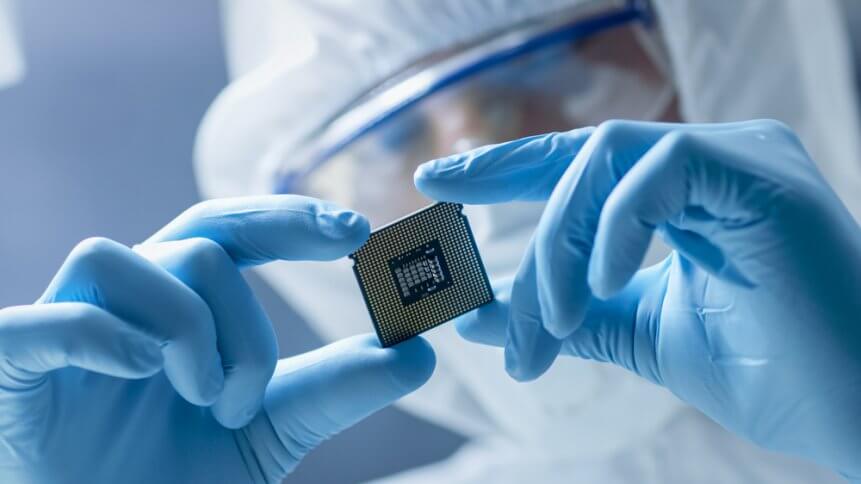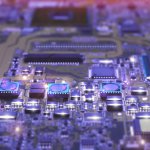How the AI hardware market will emerge stronger from 2020

- Electronics firms have been hit hard by pandemic-induced supply chain disruptions
- But the semiconductor industry can regroup and take advantage of affirmed interest in AI and automation
Software has been “the star of high-tech” over the years, but hardware is the core enabler of innovation.
As businesses and consumers alike latch on to the advantages of AI applications, whether it’s virtual assistants or facial recognition systems, there is a resurging need for advanced hardware.
Deloitte describes semiconductors as “essential technology enablers” that power many of the cutting-edge digital devices we use today. By providing next generation accelerator architectures, semiconductor companies can increase computational efficiency or facilitate the transfer of large data sets through memory or storage, crucial for machine learning and AI development.
With early growth driven by a boom in consumer electronics, within the forthcoming decade this market is set to leverage the rise of emerging technology such as AI, autonomous driving, edge computing, cloud computing, 5G and Internet of Things (IoT).
Advances in AI could allow semiconductor companies to capture 40% to 50% of total value from the technology stack, representing the best opportunity they’ve had in decades.
But like most other physical industries, the semiconductor industry too has been struck by the coronavirus pandemic as supply chains came to a grinding halt, and have been slow to come back into full productivity as a result of social distancing measures and other disruptions.
Getting this industry back into full production will be key for continued progress towards emerging technologies and further advances in AI, but the market will also be driven by changing demands in the way we work. Nonetheless, many in this industry believe that – despite negative year-on-year growth in 2020 – the market could rebound for the better in the midterm, driven by increased interest in advanced automation as a ‘nuke-proof’ solution to another crisis.
According to a report by KPMG, while nearly two-thirds (63%) of businesses in the semiconductor industry had reported supply chains shortages as a direct result of COVID-19, 59% believed the growth and adoption of 5G, AI and IoT in the wake of the pandemic would bring a positive impact on the marketplace.
That said, the semiconductor industry won’t succeed by simply ploughing ahead with previous plans. It must review and adjust its approach in line with the seismic impact COVID-19 has had on the way businesses work now, and the ‘new normal’ approach they continue to adapt to.
McKinsey’s report pointed to several trends of specific industries, and one of the examples explicitly shows how the current climate affects the present day and future demands of semiconductors.
The PC segment is predicted to see the sharpest drop, as most consumers are keen on purchasing home-office electronics they need to work from home for the remainder of this year (or forever). What this means is a decreasing demand in these goods next year. There are also some enterprises looking to delay investments in PCs due to budget controls despite being in a so-called recovery mode.
Industry members will be more equipped when evaluating the impact of COVID-19 in the long run, but McKinsey highlighted two particular factors to observe — market pull and industrial shift.
A soar in equipment to support studying and working from home will lead to a hike in demand for semiconductors that enable servers, connectivity, and cloud usage. This is an example of an emerging market need, and semiconductor companies exist to cater to this growing appetite.
With this in mind, analysts anticipate seeing the semiconductor sector shift to new operations and processes. The global pandemic, which caused restrictions in travel and movement, as well as major closure of fulfillment centers and manufacturing, has dramatically prompted semiconductor companies to think of new strategies. McKinsey stated that “many semiconductor companies are already reconfiguring their supply chains to improve resiliency, and the changes may continue into the next normal.”
Finally, the industry can also heed lessons from past crises. The dot-com bubble burst of 2000 or the Great Recession of 2008, provide valuable learnings to help semiconductor companies emerge even stronger from the current economic upheaval.
Besides reducing capital expenditures and maintaining a strong research and development (R&D) strategy, semiconductor companies may have a head start in a post-pandemic setting if they “take a strategic, systematic approach to investment and divestment.”
Historically, the semiconductor industry has recovered swiftly from demand shock, and with demand for AI and other advanced technologies only accelerating, the industry – despite being at the mercy of physical supply chain disruption – will continue to boom as demand for these components, the nuts and bolts behind cutting-edge applications, continues to ramp up.










